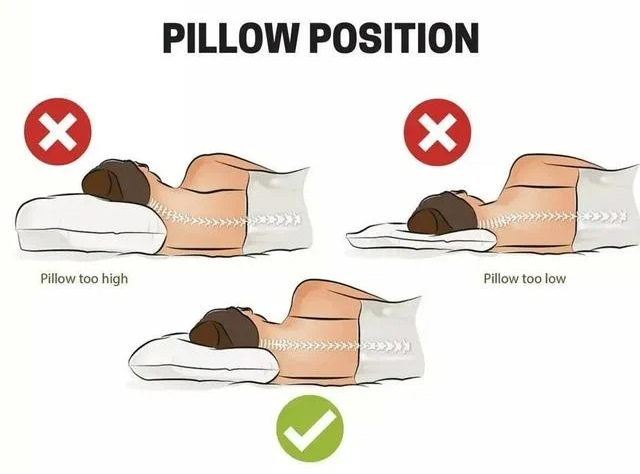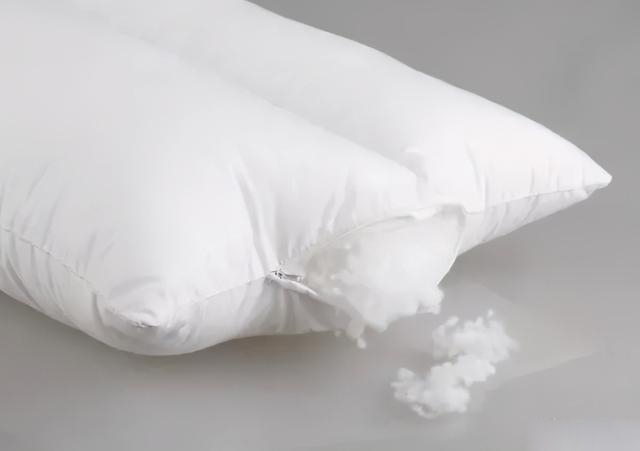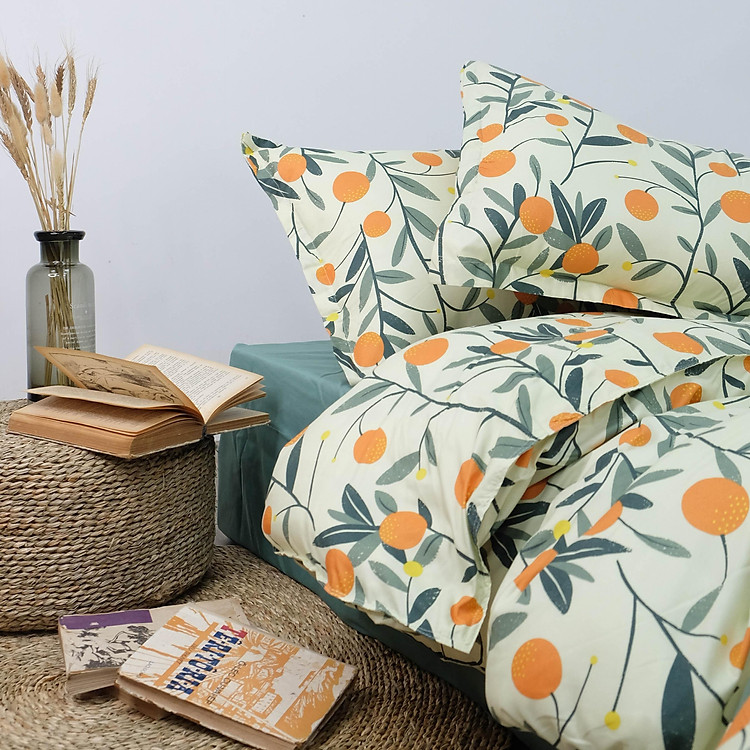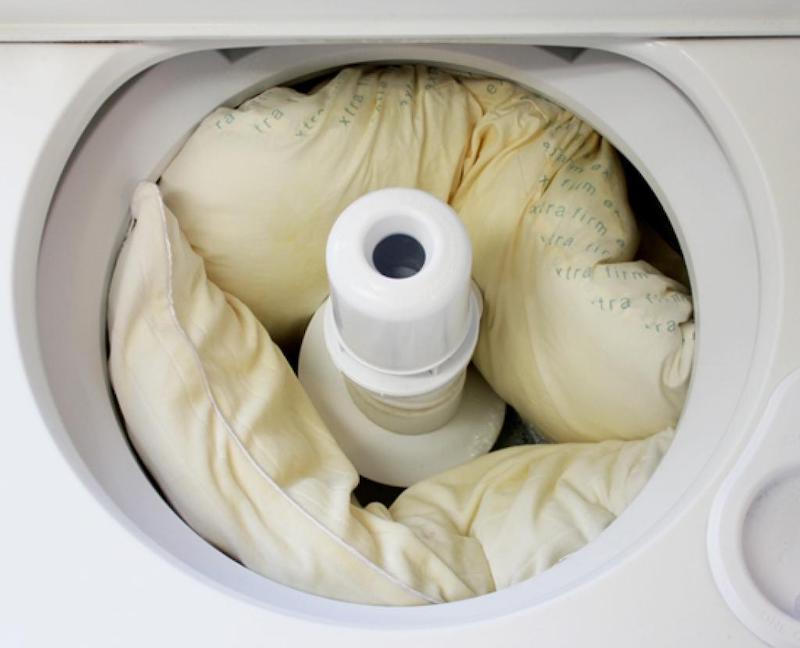Sleep plays an incredibly important role in everyone’s life. Usually, if we sleep well and get enough sleep, we will feel refreshed, relaxed, and ready to tackle the day ahead. However, some people sleep for long hours but still wake up feeling sore and tired. This could be due to poor sleep quality, which may be related to sleeping posture, pillow quality, and improper head support.

How to choose the right pillow for a deep and restful sleep
There are numerous types of pillows available in the market, and choosing the right one can be quite particular. Making the wrong choice could lead to several issues, such as:
1. High Pillow – A culprit for cervical spine degeneration
Using a high pillow can create a hollow in your neck while sleeping, leading to stiffness, shoulder and neck pain, dizziness, and other symptoms.
2. Low Pillow – May cause uneven blood flow
A low pillow will require you to tilt your head upward while sleeping, leading to a dry mouth, sore throat, snoring, and even leg cramps when lying on your side. It can also cause uneven blood flow and congestion in the nasal mucosa, affecting your sleep quality.
3. Hard or Soft Pillow – Impacts blood circulation
Apart from the height, the firmness of the pillow is also crucial. If the pillow is too hard, it can cause discomfort to your scalp. Conversely, if it is too soft, the height won’t be sufficient, putting strain on your neck and impacting blood circulation.

So, which pillow is the best?
An ideal pillow should have three key features: a basic structure to support your neck, the right height, and a high-quality filling material. Additionally, since everyone has unique habits and needs, we should choose a pillow that suits our individual requirements.
1. Choosing a pillow based on your sleeping position
There are three common sleeping positions: sleeping on your back, side, or stomach. Each of these positions has distinct pillow requirements.
– Back sleeping: If you prefer sleeping on your back, choose a pillow with a height that aligns with your arm’s length. The pillow should have a soft filling near the neck, such as pure cotton, and offer good elasticity.
– Side sleeping: For side sleepers, opt for a slightly higher pillow with a firmer material, such as canvas fabric. The ideal height can be determined by clenching your fist and adding the thickness of your palm to fill the gap between your ear and shoulder.

– Stomach sleeping: Although this position is not recommended for health reasons, many people have a habit of sleeping on their stomach. If you fall into this category, choose a thinner pillow and place another thin pillow under your stomach to prevent back pain.
2. Choosing a pillow based on its material
Since pillows are in direct contact with our skin daily, it’s essential to consider the quality of both the pillowcase and the filling when purchasing one. When selecting a pillowcase, opt for pure cotton fabric with good breathability and absorbency. As for the filling, you have several options, each with its pros and cons:
– Regular synthetic fiber filling: Easy to clean and affordable, but lacks elasticity, traps air, and tends to deform and clump.
– Cotton filling: Excellent breathability and absorbency, but prone to bacterial growth and requires frequent replacement.

– Premium down filling: Good loft, resistant to deformation, lightweight, breathable, and comfortable. However, it is challenging to clean and may trigger allergies in some individuals.
– Natural latex foam filling: Excellent elasticity, sterile, and resistant to deformation. It is also easy to clean but relatively expensive.
How to properly clean your sleeping pillow
Pillows come into direct contact with our bodies, and over time, the pillowcase and filling accumulate dirt, sweat, dead skin cells, and more. This creates an environment conducive to bacterial growth, mold, and other health hazards. Therefore, it’s crucial to clean your sleeping pillow regularly to maintain its quality and ensure a healthy sleep environment.
Cleaning the pillowcase
To ensure hygiene, it’s recommended to clean your pillowcase frequently, ideally once a week. For yellowed pillowcases, you can try one of the following natural methods to safely and effectively restore their whiteness:

Method 1: Rice water + orange peels => Save the rice water from washing rice, add a few pieces of orange peel, and boil it. Soak the yellowed pillowcases in this solution and scrub them. They will soon regain their whiteness.
Method 2: Lemon juice => Sweat on the pillowcase is acidic, and lemon juice has alkaline properties that can neutralize the acid-base balance. When washing the pillowcase, add some lemon juice to the water to remove yellow stains.
Method 3: Baking Soda + Dish Soap => This method can also be used if you’re washing the pillowcase in a washing machine. Simply add 2 tablespoons each of baking soda and dish soap, and wash on a standard cycle. Say goodbye to yellow stains!
Cleaning the pillow filling
Although protected by the pillowcase, the filling also gets dirty, discolored, and smelly over time, becoming a breeding ground for bacteria. While it’s challenging to clean, it’s essential to wash the filling at least twice a year and replace it every two years. Here are two basic methods to manually wash the filling:

Hand-washing the pillow filling:
– Step 1: Dissolve soap in hot water (not warm water) as the heat helps remove dirt and kill bacteria.
– Step 2: Soak the filling for about 15-20 minutes.
– Step 3: Gently swirl and squeeze the filling in the water to let the hot soapy water do the cleaning.
– Step 4: Rinse thoroughly with water multiple times to remove all soap residue. Use fabric softener in the final rinse for a pleasant scent.
– Step 5: Gently press and use a towel to absorb excess water without twisting the filling.
– Step 6: Air-dry the filling in direct sunlight. By the end of the day, you’ll have a clean, fresh-smelling pillow. For added peace of mind, place the filling in the sun for a few hours and vigorously beat it to remove dust and odors.

Machine-washing the pillow filling:
– Step 1: Check the care label on the filling to ensure it’s machine-washable.
– Step 2: Fill the machine with hot water and add detergent.
– Step 3: Load the filling into the machine, ensuring it aligns with the machine’s spin direction (horizontal for top-loading machines and vertical for front-loading machines). Fill the machine just enough to allow effective cleaning without overcrowding.
– Step 4: Select a gentle cycle with a longer duration for thorough cleaning.
– Step 5: In the final rinse, add fabric softener for a softer and fragrant filling.
– Step 6: Avoid high-spin settings as they can twist and damage the filling. Instead, use a towel to absorb excess water and air-dry the filling in direct sunlight to prevent mildew.

Additionally, to achieve the best cleaning results and maintain the durability of your pillow, it’s advisable to research specific care instructions for different types of fillings. Identify the filling in your pillow and follow the corresponding care guidelines.
By V.K – Vietnamnet
How to Make Sure You Buy the Perfect Mattress for Optimal Sleep and Health
Want to know the essentials of selecting a quality mattress that will give you a peaceful night’s sleep and boost your health? Look no further! This article provides all the key advice for finding a mattress that suits your specific needs and ensures you get a well-deserved rest. Get the important information you need to make the perfect mattress choice right here.






































